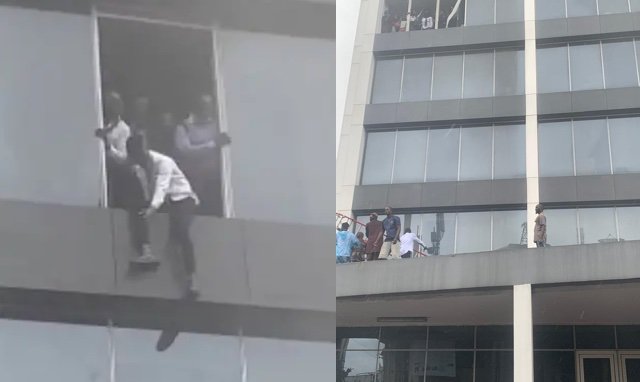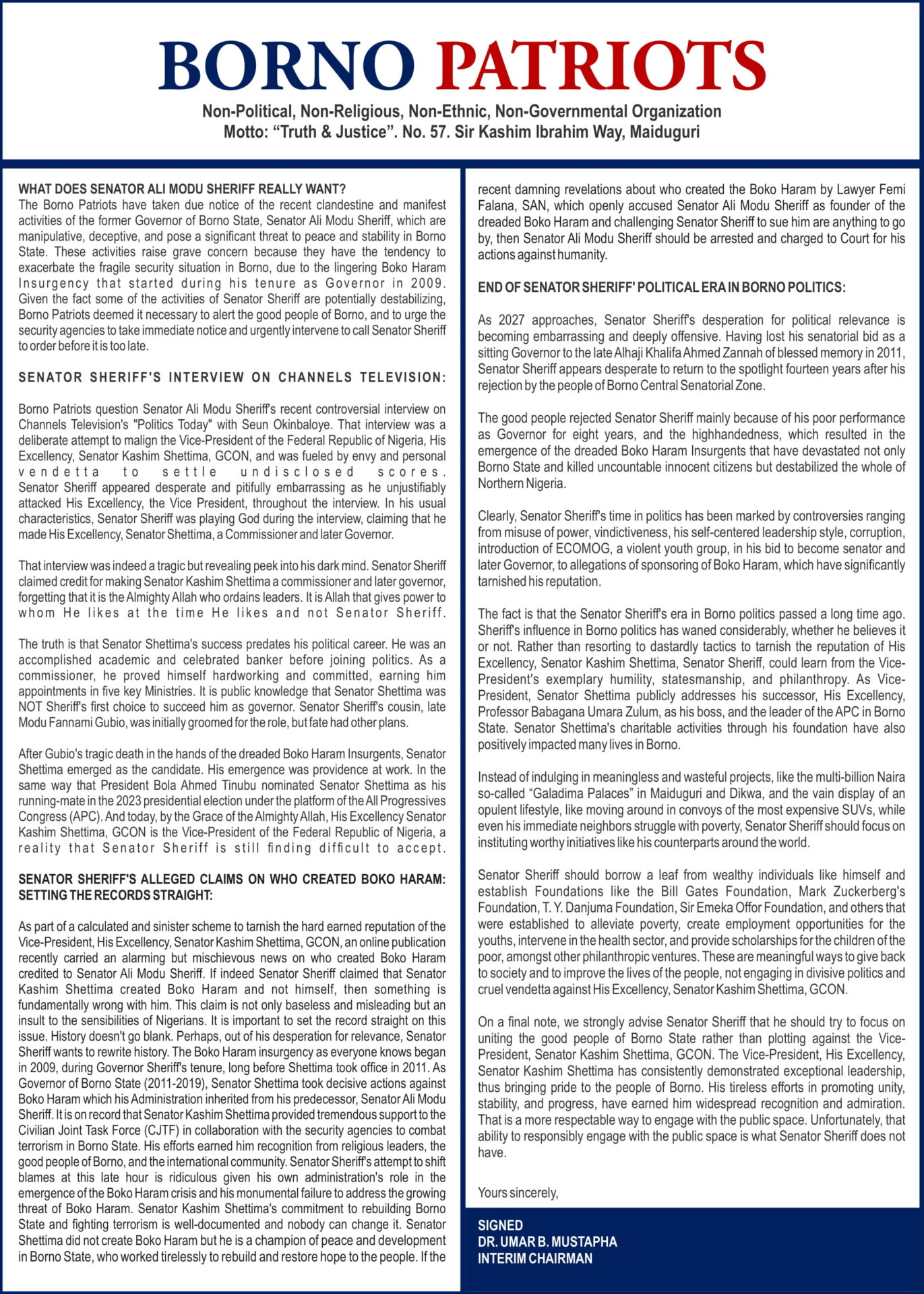FRESH details have emerged on the tragic fire incident that gutted Afriland Tower on Lagos Island earlier this week, as emergency officials have confirmed that toxic smoke from a burning lithium inverter battery system was the primary cause of the fatalities recorded.
News Point Nigeria reports that the inferno, which broke out on Tuesday at the busy Lagos Island Business District, claimed 10 lives including staff of the Federal Inland Revenue Service (FIRS) and United Capital Plc and left several others hospitalized for severe smoke inhalation injuries.
The fire at Afriland Tower was one of two separate incidents that rocked Lagos Island that day, the other being a blaze at Mandilas Market and adjoining plazas along Taiwo Street, which destroyed goods worth millions of naira.
Video footage shared on social media captured the chaos at Afriland Tower: thick smoke billowed from the windows of the multi-storey building as trapped occupants attempted to escape, with some seen dangling from windows before being rescued with ladders by passersby.
In the hours that followed, survivors were rushed to nearby hospitals after being resuscitated on the spot by first responders.
However, by Thursday, the Lagos State Fire and Rescue Service confirmed that 10 people had died in hospitals, bringing the tragedy’s official death toll to double digits.
Among the victims were four senior FIRS officials including Assistant Directors Mrs. Ekelikhostse George and Mr. David Sunday-Jatto and six staff members of United Capital Plc, who were confirmed dead in a statement by the company.
Contrary to earlier fears that victims may have been burnt in the blaze, emergency officials and medical personnel have now confirmed that most of the casualties died from complications caused by inhalation of toxic lithium battery fumes.
“The fire itself was never the major threat. It was the lithium battery powering the inverter that ignited, releasing a toxic smoke that travelled fast through the building,”
a senior emergency responder told reporters: “No one can inhale that kind of smoke for more than a minute without losing consciousness.”
Another official explained that the smoke displaced oxygen in the building, leaving victims gasping for breath. “The smoke was laden with carbon monoxide and heavy metals, which quickly overwhelmed occupants before they could be rescued.”
Medical personnel treating the victims revealed that several suffered complications worsened by underlying health conditions.
Dr. Odunaiya Sulaimon, a Lagos-based physician, explained that carbon monoxide inhalation was likely the primary cause of death: “Carbon monoxide binds to red blood cells more strongly than oxygen, starving organs like the brain and heart of oxygen. This leads to organ failure and, in severe cases, brain death.”
Adding a scientific perspective, Bankole Owolabi, a chemistry lecturer at Adekunle Ajasin University, warned that fumes from burning lithium batteries release dangerous heavy metals such as cobalt, nickel, and manganese into the air, which can cause long-term health damage and even cancer.
Emergency responders clarified that no bodies were recovered at the scene all deaths occurred later at the hospital due to inhalation injuries.
“Those who received timely oxygen therapy survived. Unfortunately, the most severe cases succumbed to the complications,” said one of the medical officials.
In response to the tragedy, the Federal Fire Service (FFS) announced a nationwide fire safety compliance audit covering public and private buildings.
Spokesman Paul Abraham said the FFS will roll out a nationwide task force to enforce safety standards, sanction errant facilities, and train building managers.
“This is a decisive step to prevent a recurrence. We must ensure buildings have fire-resistant inverter rooms, functioning smoke alarms, and clear emergency exits,”
the statement read.






